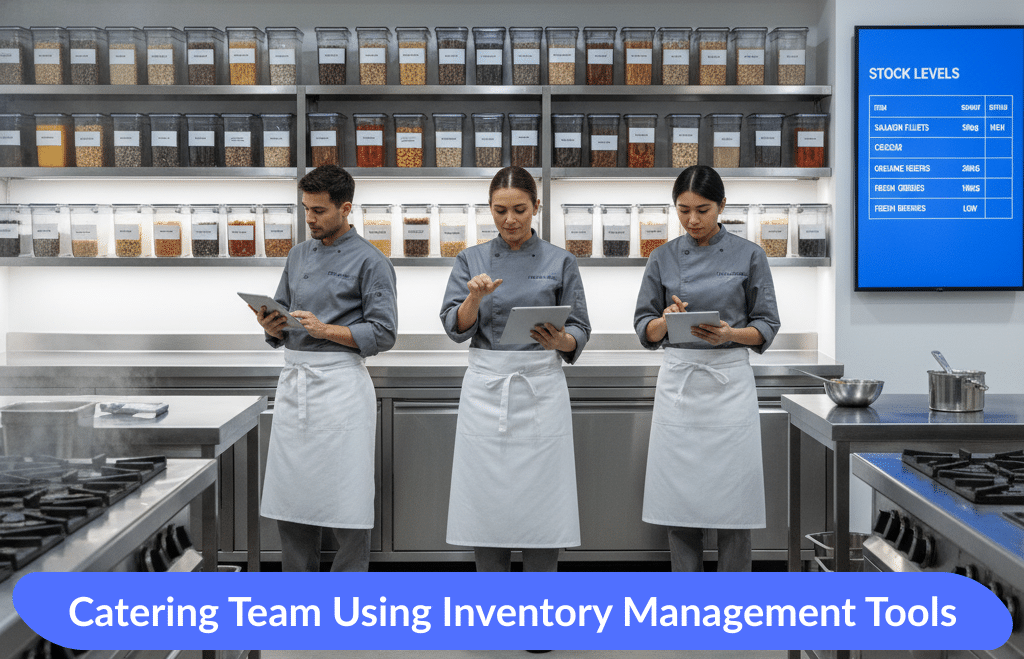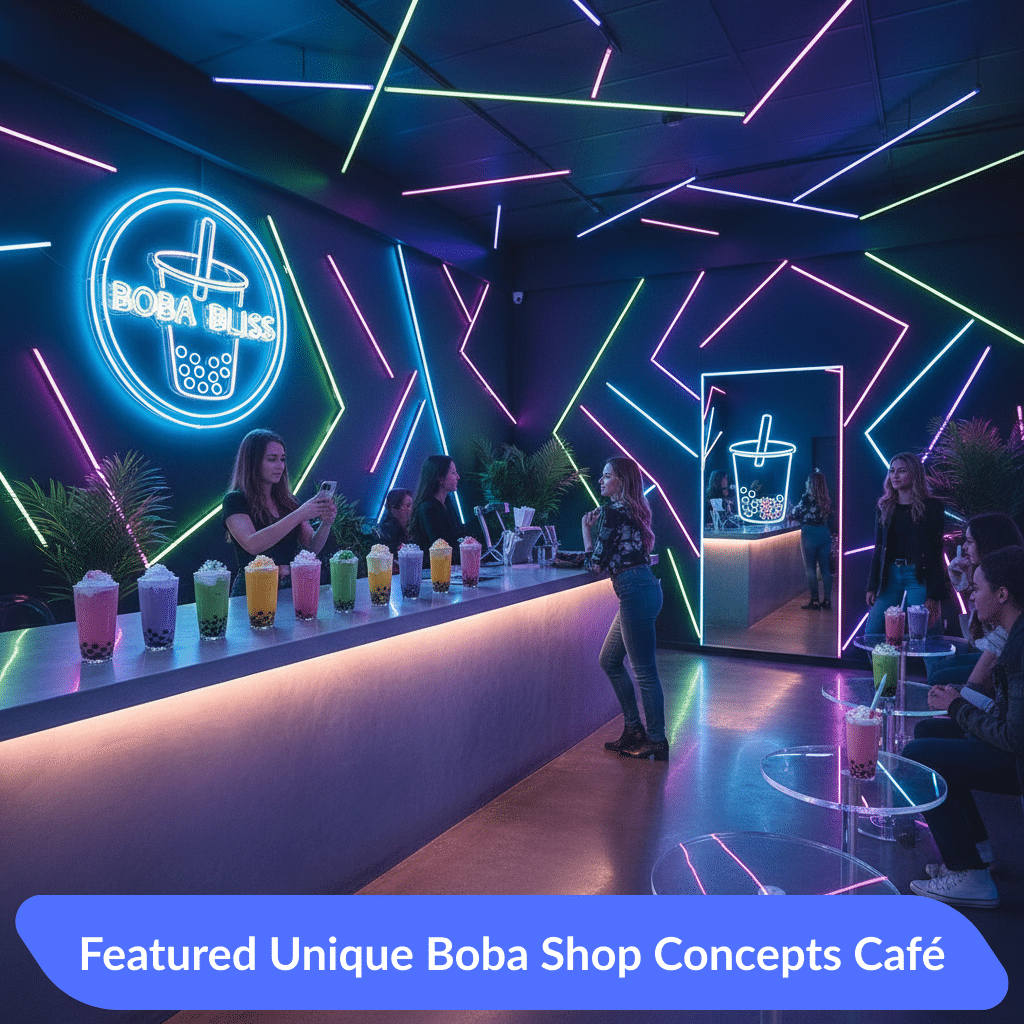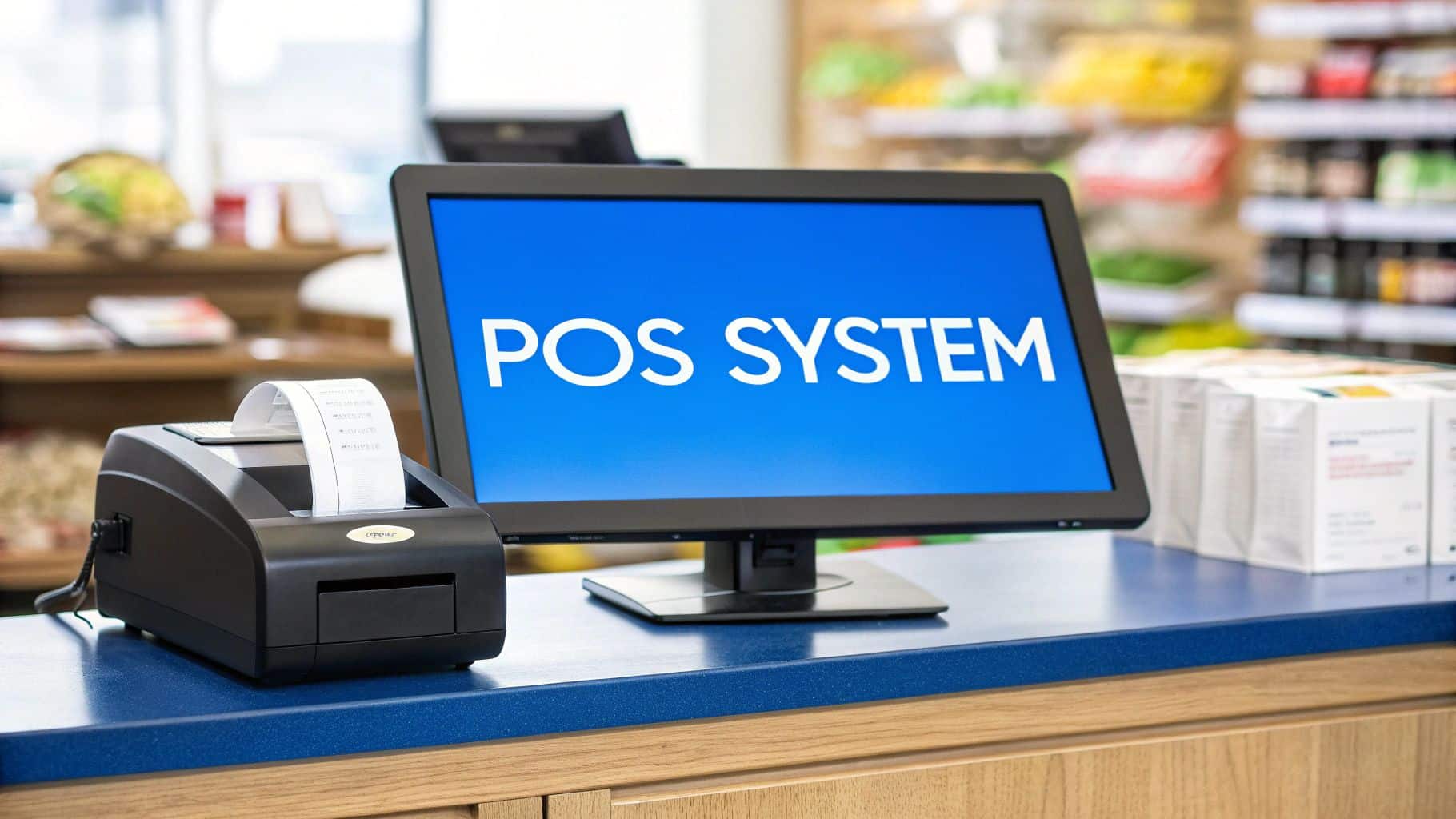In the fast-paced world of catering, one of the biggest challenges is ensuring that every event runs smoothly without running into food shortages, excess waste, or surprise costs. Effective inventory management for catering is the backbone of successful operations. It ensures that every ingredient, beverage, and supply is accounted for, reducing waste and improving profits. When caterers master this discipline, they can focus more on customer satisfaction and less on logistical headaches.
This article explores how caterers can optimize inventory processes using modern tools and strategies. From stock tracking and ingredient management to purchase orders and supplier coordination, we’ll dive deep into practical approaches that improve both day-to-day efficiency and long-term profitability. Whether you’re handling small private events or managing multi-event operations, mastering inventory is the key to scaling your catering business successfully.
Table of Contents
- Laying the Foundation of Catering Inventory Management
- Optimizing Stock Tracking and Ingredient Management
- Demand Forecasting and Event-Specific Planning
- Technology and Catering Software Integration
- Audits, Waste Reduction, and Cost Control Strategies
- How Biyo POS Helps Caterers Master Inventory Management
- FAQ: Inventory Management for Catering
Laying the Foundation of Catering Inventory Management
Before diving into advanced techniques, it’s important to establish a strong foundation for inventory management for catering. Caterers deal with a wide range of perishable and non-perishable goods, which requires a structured system to track everything effectively. By laying out clear processes from the start, you can prevent last-minute shortages and keep costs under control.
Understanding the Importance of Structured Systems
A structured inventory system ensures that every ingredient is accounted for, from fresh vegetables to packaged beverages. Without one, caterers risk double-purchasing, food spoilage, or running out of crucial items mid-event. Imagine preparing for a wedding reception and realizing you’re short on champagne or desserts. The costs of urgent replacements or disappointed clients can quickly eat into profits. This is why structured systems matter.
In addition, structured systems support catering resource management by aligning food usage with planned menus. This alignment allows chefs to work with confidence and reduces the stress of last-minute adjustments. Clear systems also empower team members to know exactly where ingredients are stored and how much is available at all times.
Most importantly, structured systems create consistency. Whether catering one small event or multiple large-scale ones, consistency in stock planning ensures the quality of service remains reliable. This consistency strengthens your reputation and builds long-term client trust.
Defining Roles and Responsibilities
Inventory management works best when roles are clearly defined. Catering teams often involve chefs, assistants, servers, and coordinators. Without clear responsibilities, accountability gets lost, and mistakes become common. For example, if multiple team members order from the same supplier without coordination, duplicate shipments can arrive, wasting money and storage space.
Assigning roles prevents confusion. A manager may oversee purchase orders while a chef ensures accurate ingredient management. Meanwhile, assistants can handle stock counts and update the system with real-time updates. Each person has a clear role that feeds into the overall system.
Defining responsibilities also makes auditing easier. If something goes wrong, it’s clear who was responsible for that step in the process. This accountability streamlines training and ensures new staff adapt quickly to established procedures.
Setting Up Storage and Tracking Systems
Storage plays a critical role in inventory management for catering. Poorly organized storage areas lead to lost items, forgotten ingredients, and higher spoilage rates. A well-structured storage system makes it easy to track what’s available and when it will expire. Shelves should be clearly labeled, and similar items grouped logically to save time during preparation.
Tracking systems enhance this organization by providing visibility into inventory levels. Modern caterers use digital tools that offer low stock alerts and expiration date tracking. These systems prevent oversights, ensuring nothing goes to waste. Caterers can also implement batch tracking to monitor which items were used for which events, an essential step for quality control.
Ultimately, combining organized storage with robust tracking leads to operational efficiency. Staff spend less time searching for items and more time focusing on the actual event execution. This balance results in better client satisfaction and higher profitability.

Optimizing Stock Tracking and Ingredient Management
Once the foundation is set, catering businesses can move toward optimizing stock tracking and ingredient management. This phase ensures that everything from food portions to supply levels is monitored closely. Optimization reduces waste, controls costs, and ensures smooth operations during high-pressure events.
Real-Time Inventory Tracking
One of the most powerful tools for caterers is real-time updates in stock tracking. This capability ensures that every change—whether an item is added, used, or discarded—is reflected immediately. Without real-time visibility, caterers can easily run into shortages or excess stock that goes unused.
For instance, during a large event, if the kitchen uses more meat than planned, the system should reflect the reduced quantity immediately. This allows managers to adjust future purchase orders accordingly. Real-time tracking also helps with supply chain management, since suppliers can be informed about replenishment needs promptly.
Beyond efficiency, real-time tracking also builds confidence in planning. Caterers know exactly what they have on hand and can adjust menus or portions if necessary, avoiding both shortages and waste.
Ingredient Management for Menu Accuracy
Managing ingredients accurately is vital for consistent service. Ingredient management involves ensuring that every dish on the menu can be prepared with the available stock. This requires precise control over portion sizes, usage rates, and supplier deliveries. If even one ingredient is missing, it could disrupt an entire dish or menu option.
Modern catering teams use digital systems to tie ingredient management directly to menu planning. This creates a seamless link between customer promises and available resources. For example, if a client orders vegan meals, the system ensures that all plant-based ingredients are sufficiently stocked and available for preparation.
Ingredient management also improves cost control. By tracking exactly how much of each item is needed, caterers avoid over-purchasing or underutilizing ingredients. This precision minimizes waste and increases profitability.
Supplier Coordination and Purchase Orders
Supplier relationships form another key aspect of inventory management for catering. Reliable suppliers ensure timely deliveries and consistent quality, which directly impacts customer satisfaction. Caterers must coordinate closely with suppliers to maintain smooth operations and prevent unexpected delays.
Using automated purchase orders helps streamline this process. Systems can generate purchase requests when stock levels hit predefined thresholds. This prevents stockouts and ensures that essential ingredients are always on hand. Automated orders also reduce administrative workload, freeing managers to focus on event execution.
Good supplier coordination also strengthens trust. Suppliers appreciate clear communication and accurate forecasts. In return, they may offer better pricing, faster delivery, or priority service during busy seasons. These partnerships can make or break a catering business during peak demand.
Demand Forecasting and Event-Specific Planning
Another essential component of inventory management for catering is forecasting demand. Unlike restaurants, caterers face fluctuating event sizes and menu requirements. Predicting demand helps ensure that supplies match the specific needs of each event while avoiding costly overstocking.
Event-Based Demand Planning
Event-based planning involves analyzing the unique requirements of each occasion. For instance, a corporate lunch for 50 people requires different resources compared to a wedding for 300. Effective demand planning means understanding portion sizes, guest preferences, and seasonal availability of ingredients.
By applying demand planning strategies, caterers can adjust stock levels for each event. This prevents under-preparation while avoiding the pitfalls of ordering unnecessary surplus. Event-specific planning also improves client satisfaction, as it ensures every guest receives the promised quality and quantity of food.
Modern catering systems allow caterers to create multi-event inventory plans. This feature ensures that resources are allocated correctly across simultaneous events, reducing the risk of running out of stock during busy weekends.
Forecasting with Historical Data
Historical data is one of the most valuable tools for caterers. By analyzing past events, managers can forecast how much food and supplies will be needed in the future. For example, if a holiday season typically requires 30% more beverages, this insight allows for smarter purchasing decisions.
Using this approach, caterers can prepare more accurate inventory forecasting models. These models anticipate fluctuations in demand, ensuring that supplies match real-world consumption. Data-driven forecasting reduces uncertainty and improves financial outcomes for the business.
Additionally, forecasting strengthens supplier coordination. Sharing forecast insights with suppliers helps them prepare for larger orders, reducing the risk of late deliveries or shortages during critical events.
Managing Seasonal Variations
Seasonality plays a big role in catering. Demand for certain ingredients, such as fresh fruits or seafood, can vary drastically across seasons. Ignoring these variations leads to higher costs or sudden shortages. Caterers must account for seasonality when creating demand forecasts.
Effective inventory management for catering means anticipating these fluctuations and building flexible menus. For instance, offering seasonal alternatives reduces costs while delighting clients with fresh, timely dishes. This flexibility enhances both customer experience and profitability.
In addition, seasonal planning helps avoid waste. If certain items are scarce or overpriced, caterers can pivot to alternatives without compromising quality. This adaptability demonstrates professionalism and resourcefulness, strengthening client relationships.
Technology and Catering Software Integration
Technology has transformed inventory management for catering by simplifying complex processes. Modern catering software provides caterers with integrated solutions for tracking, forecasting, and managing supplies in real time. This technology not only saves time but also improves accuracy across the board.
Catering Software Integration
Integrating software into catering operations creates a centralized platform for inventory control. Instead of relying on spreadsheets or manual counts, managers can access real-time data from any device. This integration provides visibility across multiple locations or events simultaneously.
For example, if one team runs out of ingredients at a venue, software integration can show available stock at another location. This visibility prevents costly duplication and ensures smooth coordination across events. Caterers gain both efficiency and peace of mind from knowing their data is reliable.
Software integration also supports compliance. Many caterers must adhere to food safety regulations, including expiration date tracking. Digital systems simplify compliance by automatically flagging expired items, reducing the risk of serving unsafe food.
Automation of Routine Tasks
Automation is another major benefit of technology. Tasks like low stock alerts, itemized reporting, and purchase orders can be fully automated, saving hours of manual effort. This automation reduces human error, ensuring that crucial tasks are never overlooked.
For example, an automated system might notify managers when wine stock is below a certain threshold. The same system could generate a purchase order and send it to suppliers without human intervention. This efficiency eliminates bottlenecks and ensures continuous operations.
Automation also improves scalability. As catering businesses grow, manual processes become increasingly unmanageable. Automated systems allow businesses to expand without compromising on quality or control.
Real-Time Analytics and Reporting
Analytics are essential for continuous improvement. Catering software provides detailed itemized reporting that highlights consumption trends, cost breakdowns, and waste patterns. These reports provide managers with actionable insights for refining operations.
For example, if reports show consistent overuse of a particular ingredient, portion control practices may need adjustment. Similarly, if certain items frequently expire before use, purchasing strategies can be optimized. Real-time analytics give managers the knowledge to make data-driven decisions.
Reports also support financial planning. Accurate cost tracking improves budget forecasts and profitability analyses. Caterers can confidently present financial results to stakeholders or use the insights to negotiate better supplier contracts.
Audits, Waste Reduction, and Cost Control Strategies
Even with the best planning, catering operations must constantly monitor for inefficiencies. Regular audits, waste reduction strategies, and strict cost control are essential for long-term success. By focusing on these areas, caterers can safeguard profitability while maintaining high-quality service.
Conducting Regular Inventory Audits
Audits are essential for ensuring that physical stock matches recorded data. Without audits, small errors can snowball into significant financial losses. For instance, unnoticed shrinkage from theft or miscounts can skew reports and lead to costly mistakes.
Regular inventory audits provide a clear snapshot of current resources. These audits help identify discrepancies, improve accuracy, and maintain trust in the system. Caterers who conduct audits regularly experience fewer surprises and maintain better control over their operations.
Audits also strengthen staff accountability. When employees know audits occur frequently, they are more likely to handle resources responsibly. This culture of accountability reduces errors and enhances operational integrity.
Waste Reduction through Portion Control
Waste is one of the biggest threats to profitability in catering. Overproduction, oversized portions, or poorly managed storage all contribute to unnecessary costs. To combat this, caterers must focus on portion control and efficient preparation practices.
Implementing portion guidelines ensures consistency across dishes. Customers receive the same experience every time, while businesses save money by using only what’s necessary. Portion control also supports health-conscious trends, appealing to clients who value balanced meals.
Beyond portion control, waste reduction strategies include using leftover ingredients creatively. For example, unused vegetables from one event can be repurposed for soups or side dishes at another. This approach maximizes resources while minimizing losses.
Effective Cost Control Measures
Cost control ensures long-term financial health. By monitoring spending and adjusting practices, caterers can maintain profitability even in competitive markets. Effective cost control involves analyzing all expenses, from food to labor and storage.
Digital systems make cost control easier by providing detailed breakdowns of every expense. Caterers can identify areas where spending exceeds expectations and implement corrective actions. For example, switching suppliers or renegotiating contracts can yield significant savings without affecting quality.
Cost control also involves smart planning. By aligning inventory optimization with client demands, caterers can reduce unnecessary purchases. This efficiency not only saves money but also enhances client satisfaction by delivering value-driven service.

How Biyo POS Helps Caterers Master Inventory Management
For caterers looking to simplify their operations, Biyo POS provides the tools needed to master inventory management for catering. With features like real-time updates, low stock alerts, and multi-event inventory tracking, Biyo POS ensures that every ingredient and supply is managed effectively.
The system integrates seamlessly with supplier coordination and purchase orders, ensuring that caterers never run short on essential items. It also supports expiration date tracking and batch tracking, which improves food safety compliance. By combining ease of use with powerful analytics, Biyo POS allows caterers to focus on delighting clients while maintaining financial control.
If you want to scale your catering business with smarter inventory management, explore the possibilities with Biyo POS. You can sign up here and start optimizing your operations today.
FAQ: Inventory Management for Catering
Why is inventory management important for catering businesses?
Inventory management is crucial because catering relies on precise planning and execution. Running out of stock or over-ordering leads to financial losses, waste, and dissatisfied clients. A strong inventory system ensures resources match event needs, improving efficiency and profitability.
What tools help improve inventory management for catering?
Modern catering businesses use digital tools like POS systems, catering software, and real-time inventory trackers. These tools provide real-time updates, low stock alerts, and itemized reporting. They help caterers make data-driven decisions and streamline supplier coordination.
How can caterers reduce waste in their operations?
Waste reduction strategies include portion control, batch tracking, and creative use of leftovers. By aligning purchasing with demand forecasts and ensuring accurate ingredient management, caterers minimize waste while maintaining high service quality. This approach saves money and enhances sustainability.




